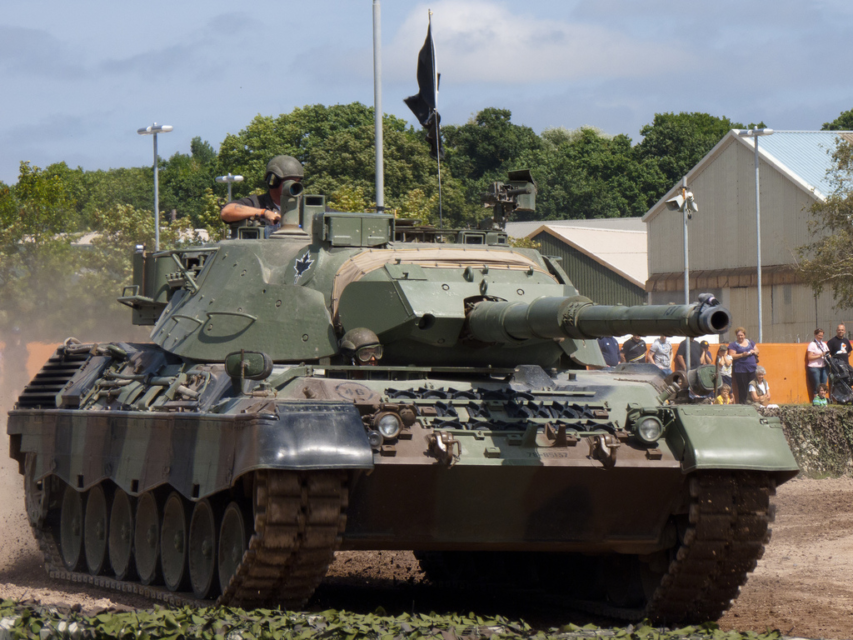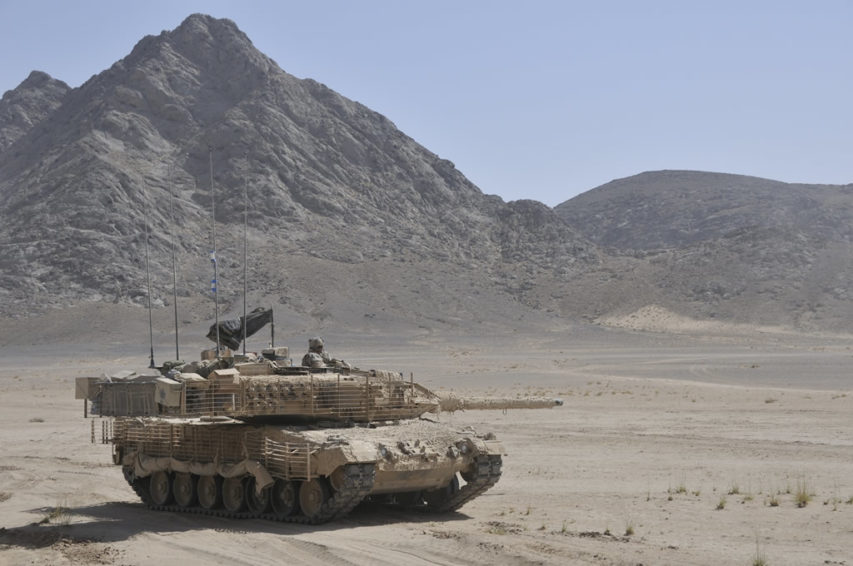In a discussion on Facebook the other day, I’d mistakenly stated that the Canadian Army had initially sent the “new” Leopard 2 tanks leased from Germany (20 refurbished Leopard 2A6Ms) to Afghanistan to support the Kandahar mission. In fact, as a lengthy article linked by John Donovan pointed out, our poor zipperheads had been operating non-air-conditioned Leopard 1 tanks until the government made arrangements with some of our NATO allies to get modern MBTs into the combat zone. I suspect the reason for my confusion was that the old Leopard 1 tanks were designated as “C2” by the army and I’d confused that with the more general “Leopard 2” name for the modern tank. This article in Defence Industry Daily sets out the details:
A number of options for renewing Canada’s tank capability were considered, ranging from refurbishment, to surplus, to new. Delivery time was of the essence, and DND’s examination determined that the cost of any new vehicles involved paying up to 3 times as much as buying the same basic tank models on the surplus heavy tank market. New medium tank options like the 32-tonne CV90-120 light tank also offered full tracked mobility and similar firepower at less cost, but Canada had learned that heavier weight was often a tactical plus in theater, and decided that they needed vehicles sooner rather than later.
Accordingly, the Canadian government approached 6 allied nations regarding surplus main battle tank sales, and received proposals from 3 of them. It then went ahead and made 2 purchases, plus another 2 follow-on buys.
Their tank choice is a modern mainstay for many countries. Thanks in part to the great DeutschePanzerSchlussverkauf (German Panzer fire sale), the Leopard 2 and its variants external link have now been bought by Germany, Austria, Canada, Chile, Denmark, Finland, Greece, the Netherlands, Norway, Poland, Spain, Singapore, Switzerland, Sweden, and Turkey.
Canada’s 1st step was a lease, in order to get modern, air-conditioned tanks to the front lines immediately. Germany won that order, and 20 German Leopard 2A6M mine-protected tanks were delivered by the summer of 2007 to replace existing Leopard 1A5/C2 tanks in Afghanistan. The new tanks’ electric turret systems produce less heat than the C2s did, and air conditioning was added to the new German tanks in theater. This was a relief to Canadian tank crews, who had needed protective suites in the 140F/ 60C interiors of their Leopard 1A5 tanks.
The 2A6M is the most modern serving Leopard variant, though KMW had proposed a “Leopard 2 Peace Support Operations” variant with improved protection, and integrated combat engineering capabilities. By the time modifications were finished, the Leopard 2A6 CAN turned out to fall somewhere between the conventional 2A6M and the PSO. Canada actually ended up keeping the leased and modified German tanks, and sending 20 Leopard 2A6Ms from its follow-on purchases back to Germany.
The follow-on purchases of 127 tanks were won by 3 countries. The biggest order for 100 tanks went to the Dutch, who are serving under NATO ISAF beside Canadian forces in southern Afghanistan. Training for 5 years and initial spares will also be provided. Cooperation between these nations is not new. Dutch PzH-2000 mobile howitzers have already proven very helpful during Operation Medusa external link, and so had their CH-47 Chinook medium-heavy helicopters – some of which were bought as surplus from the Canadians in the 1980s. The cycle continues. And so it goes.
In the aftermath of their sales to Norway, Denmark, and now Canada, The Dutch were left with 110 Leopard 2A6-NL tanks in their arsenal. Other sales dropped that total further, and on On April 8/11, the Dutch Ministry of Defense announced that the last tank unit was to be dissolved and all remaining Leopard tanks sold.
The additional Leopard 2 buys totaled 27 tanks/ hulls. First, another 15 Leopard 2A4s were bought from Germany, to be used for spare parts. This hadn’t been contemplated in the initial plan, but it was necessary. The initial set of 20 leased German Leopard 2A6Ms were experiencing readiness problems, as tanks were cannibalized in order to keep others running. A 2010 buy from Switzerland added 12 stripped Pz 87s (Leopard 2A4 variants) for conversion to specialty vehicles, under Canada’s Force Mobility Enhancement (FME) program.
The earlier Leopard 1 tanks had been purchased in the late 1970s (very much against the preferences of the government of the day) to replace the late 1940s vintage Centurion tanks the Canadian Army had been operating:

Canadian Leopard 1A3 (Leopard C1) at the Bovington Tank Museum.
Photo by Chris Parfeniuk, via Flickr.
When 4 Canadian Mechanized Brigade Group was moved from Westphalia to Lahr on the Rhine frontier with France, some policy-makers apparently sought to do away with Canada’s tanks entirely.
For some years, the brigade continued to use their Centurion tanks, an excellent tank in its day but one that could not be used on long road moves. In 1975, the Canadian Prime Minister, Pierre Trudeau, visited Germany to ask the Chancellor for his support for getting Canada special trade status with the European Common Market. He was told to come back to discuss the matter once Canada had replaced its antiquated tanks.
The contract for the Leopard tank acquisition followed quickly. Consideration had been given to totally rebuilding the Centurions with new power pack as the Israeli army has done with their Centurions. Before the order could be delivered Canada negotiated a deal with the German Government to lease 35 Leopard 1A2’s to train their crews on the new tanks.
The upgrade from the initial Leopard C1 to the C2 model began in 1996:
Late in 1996 it was announced that the Canadian Forces were to carry out a major update on their fleet of Leopard C1 tanks (The C1 was the equivalent of the Leopard 1A3), which involved the replacement of the existing turret with the complete turret of the German Leopard 1A5. The Leopard 1A5 turret features the STN ATLAS Elektronik EMES-18 computerized fire-control system which incorporates a Carl Zeiss thermal imager.
The 105mm L7 rifled guns in the Leopard 1A5 turrets were not retained but were replaced with Canadian Leopard C1 original 105mm guns, the L7A1. The ballistic computers were reprogrammed to match 105 mm Canadian ammunition.
The turret rebuild was carried out in Germany and commenced in June 1997 with the first turret being shipped to Canada in December 1997. GLS refurbished the turret, removed the 105 mm gun, modified the turret where required, including the installation of the new radios ordered under the Tactical Command, Control and Communications System project.
The turrets were shipped to Canada where a subcontractor installed the 105 mm L7A1 barrel and mounted the turret on the existing chassis for final delivery to the Canadian Forces. It was expected that about six turrets a month would be upgraded with each turret taking six months to upgrade. The program was completed by late 2001.




